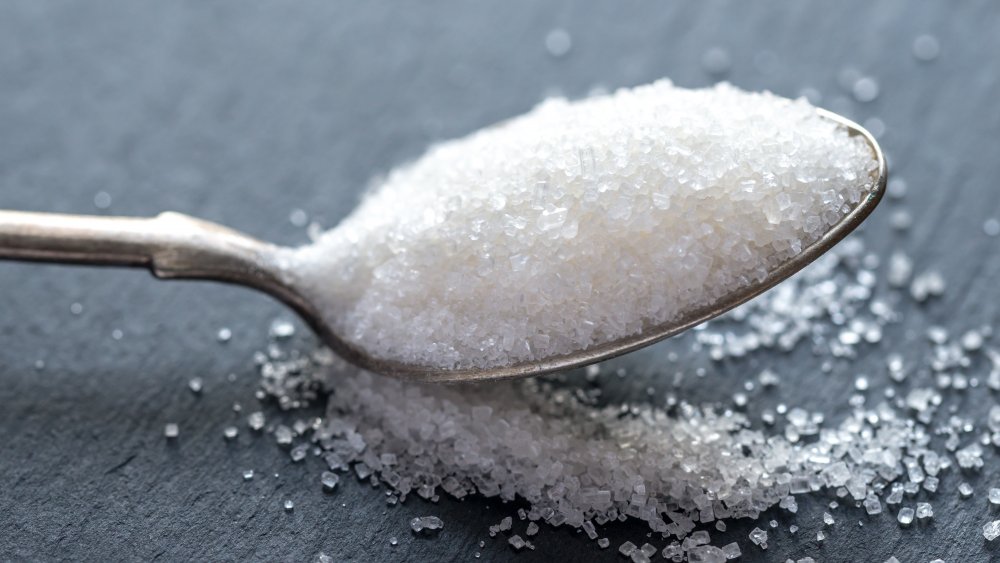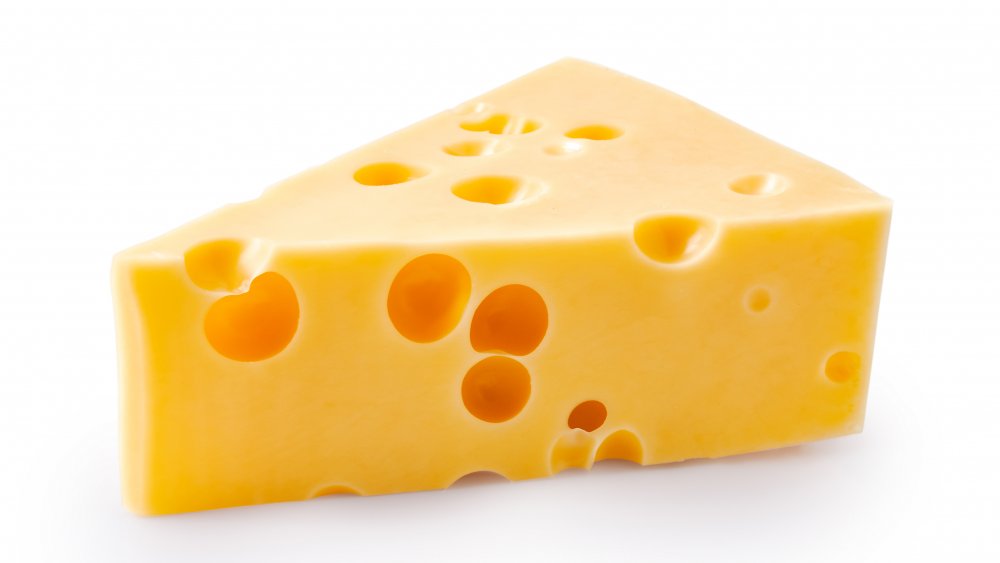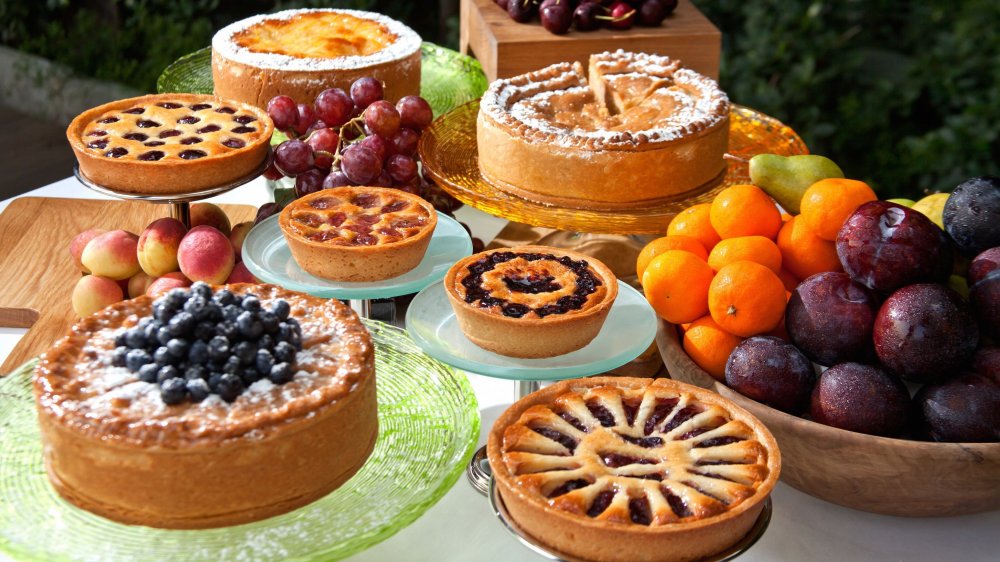Here's Why Sugar Is Added To Almost Everything We Eat
Next time you go grocery shopping, pause and look at the ingredients lists on all the foods you purchase. Chances are, almost everything you are intending to buy has some type of sugar added to it, even foods that you wouldn't associate with sweetness, like salad dressing, peanut butter, bread, and TV dinners (via SELF). This is because a lot of the time sugar is added to a food, it is not exclusively to sweeten the dish.
Online journal Comprehensive Reviews in Food Science and Food Safety states that there are five main reasons to add sugar to food, and only one of them is to increase sweetness. The other four functional properties of sugar are preservation, color and flavor, fermentation, and bulk and texture. Depending on the product you're buying, sweeteners can be added for any one of these five properties. While there are many types of sweeteners, both artificial and natural, only sugar (or sucrose) offers all five of these functional properties.
Sugar helps keep food fresh
One functional property of sugar is preservation. Sugar is very good at absorbing water, which helps extend the shelf life of foods. Water is necessary for things like yeast and bacteria to flourish, so the more sugar something contains the longer is it able to hold off the offending growth. Sugar also helps preserve the color of foods like jams, jellies, and frozen fruits by protecting the fruit from air or absorbing extra water, which both discolor fruit.
Another functional property of sugar is color and flavor. In this case, the flavor we're talking about comes from the caramelization of sugar or the Maillard reaction. Both of these are caused by sugar being carefully cooked, and result in a deeper flavor than sugar normally imparts, as well as a darker hue.
Sugar is an important part of the fermentation process, and is used for this property in items like soy sauce, yogurt, bread, and beer. The two types of fermentation are lactic acid bacteria fermentation and yeast fermentation. Lactic acid bacteria fermentation is commonly used in dairy products, where the sugar interacts with lactic acid bacteria to create lactic acid and other molecules which prevent dairy from spoiling — as well as from bad bacteria growing in it. This fermentation affects the product's color, flavor, aroma, and body. Yeast fermentation is when yeast and sugar combine, which gives off a gas that allows baked goods to rise. Yeast fermentation is also how beer becomes alcoholic and carbonated (via How Stuff Works).
Sugar not only sweetens foods, but also changes their texture
Sugar is primarily used for its bulk and texture properties in sweets. In baked goods, sugar helps tenderize the products by competing with starches and proteins for any liquid in the recipe. This helps different baked goods in different ways, depending on how the sugar reacts to various ingredients. For example, in some types of dough, sugar traps small amounts of air inside which expand when they bake, making your baked goods less dense than if you had forgone the sugar. Sugar also affects the way ice crystals form in ice cream by causing the freezing point of the mixture to drop. This creates smaller ice crystals, giving frozen desserts a desirable, creamy quality. In candy, the way sugar crystallizes is primarily how the texture is determined. In soft candies, sugar crystallization is minimized and in hard candies, it is encouraged.
The last (and most obvious) reason sugar is added to food is to sweeten it. Sweetness improves on the palatability of food, and is one of the few tastes we are born with. This is why sugar is frequently added to healthy foods marketed towards children — they are more likely to choose a sweet option over an unsweetened one. In other foods not necessarily made for children, sugar plays an important role in balancing other flavors present in the dish. Sugar is added to foods to enhance some flavors and counteract excessive bitterness or acidity.


